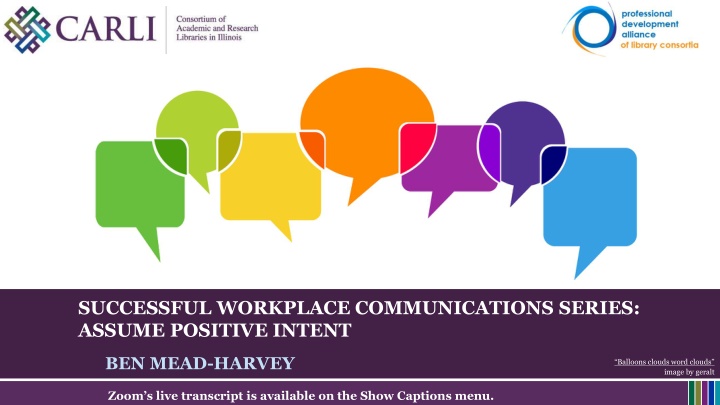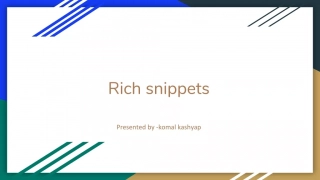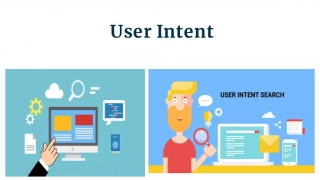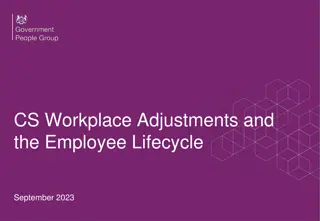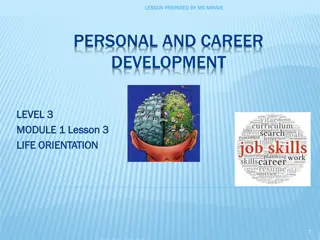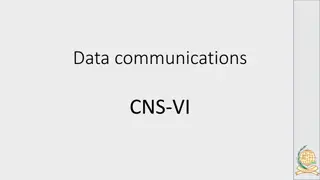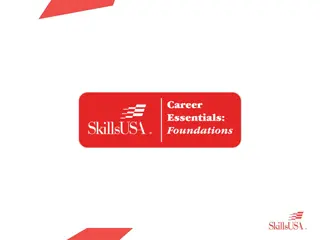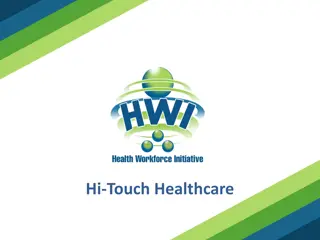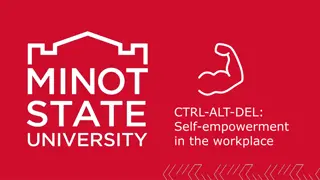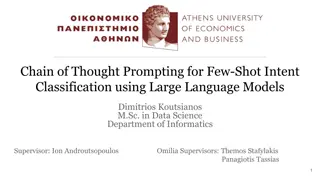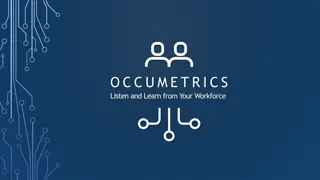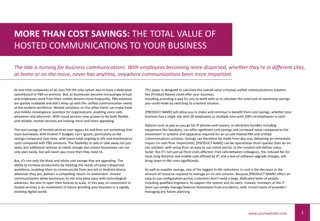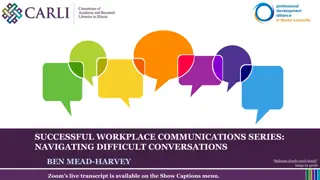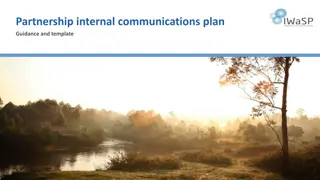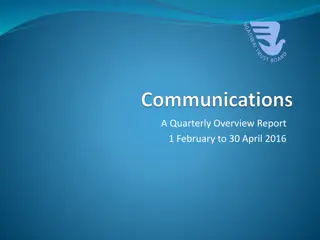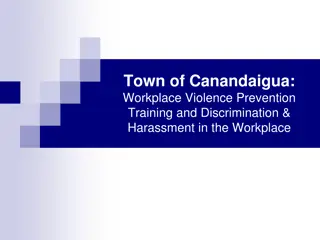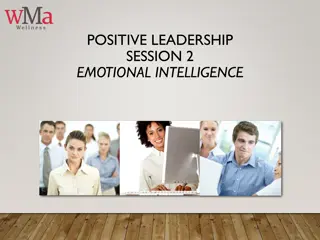SUCCESSFUL WORKPLACE COMMUNICATIONS SERIES: ASSUME POSITIVE INTENT
Embrace the philosophy of assuming positive intent in workplace communications to simplify interactions and foster understanding. Explore techniques for dealing with challenging situations and limitations in applying this approach. Enhance communication efficiency and clarity by focusing on actions and benefits. Overcome obstacles and improve relationships by adopting a positive intent mindset.
Download Presentation

Please find below an Image/Link to download the presentation.
The content on the website is provided AS IS for your information and personal use only. It may not be sold, licensed, or shared on other websites without obtaining consent from the author.If you encounter any issues during the download, it is possible that the publisher has removed the file from their server.
You are allowed to download the files provided on this website for personal or commercial use, subject to the condition that they are used lawfully. All files are the property of their respective owners.
The content on the website is provided AS IS for your information and personal use only. It may not be sold, licensed, or shared on other websites without obtaining consent from the author.
E N D
Presentation Transcript
SUCCESSFUL WORKPLACE COMMUNICATIONS SERIES: ASSUME POSITIVE INTENT BEN MEAD-HARVEY Balloons clouds word clouds image by geralt Zoom s live transcript is available on the Show Captions menu.
Agenda Defining Intent for Our Purposes Alternate Title: Stop Asking Why Dealing with Bad Actors Limitations Specific Techniques Practicing Techniques Summary
Defining Intent Intent, Motive, and Why would they do that! are all the same thing This manifests as two common behaviors: 1. Dwelling on the person s motives or reason behind their actions 2. Engaging in conversation about why someone did what they did You spend far more time/energy on this than you realize
Alternate Title: Stop Asking Why Assume Positive Intent is the philosophy Stop Asking Why is the action & the benefit Action: remove why from the conversation Benefit: dramatically simplifies approach to all workplace communications
Dealing with Bad Actors Occasionally, someone genuinely acts with malicious intent. Aren t we constraining our ability to deal with them by assuming positive intent?
Dealing with Bad Actors Occasionally, someone genuinely acts with malicious intent. Aren t we constraining our ability to deal with them by assuming positive intent? Assuming positive intent does NOT give others a pass for poor behavior In fact, just the opposite: Assuming positive intent clears the way to talk directly and explicitly about behavior Assuming positive intent sidesteps the need for drawn out conversations about whether or not someone was trying to act maliciously
Limitations You will find yourself unable to assume positive intent in some situations These limitations are internal, not external API can be used for any situation, provided you can summon the necessary empathy Some situations are simply too egregious for most of us to summon that empathy
Techniques Opportunities to use these techniques: Any difficult conversation Any time there is a difference of opinions Any time someone makes a mistake 1. Mentally separate who the are from what they did 2. Say to yourself, They meant well regardless of the outcome. 3. Focus exclusively on behavior and desired outcome
Practicing These Techniques https://docs.google.com/document/d/1nxP6NUW2KON0LyyJtM2noHPV3WYB4iIS9eb1V2ia0dc/e dit?usp=sharing
Summary Recognize that you are questioning others intent all the time Stop asking why folks do things the way they do Instead, assume they have good (and good-intentioned) reasons for their actions This holds true even when you know they have ill-will in their hearts When it comes time to address something: Remember the Fundamental Attribution Error. Stop yourself from making it Tell yourself that they had good intentions. Work to believe they had good intentions Focus any discussion on the behavior change or outcome you need to see
Thank You! My information: Blog about effective management: www.better-boss.com Email: bharvey2@illinois.edu or BMHconsults@gmail.com I will stay for questions after we officially wrap the session
